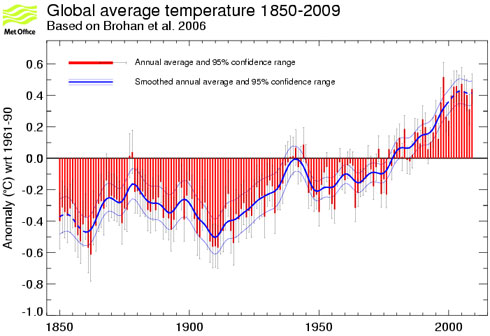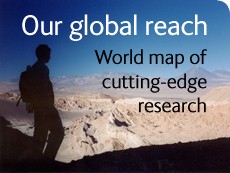The history of climate science
In the 1800s, scientists started looking at whether gases could store heat.
Working at the Royal Institute of Great Britain, physicist John Tyndall discovered the Earth’s atmosphere had a natural greenhouse effect.
While this discovery was ground-breaking, it would take many years to find out whether increases in the volume of carbon dioxide in the atmosphere were causing climate change. To do that, scientists needed years of data.
Recording temperatures
Systematic recording of the world’s temperature began in the 1800s. By the 1930s these measurements strongly suggested that the Earth was warming, but scientists still had to work out whether this was a long-term trend or just a temporary blip. And if the planet was indeed heating up, what was responsible?
The Keeling curve
By the last 1950s it was possible to measure carbon dioxide levels in the atmosphere accurately. A young scientist, Charles Keeling, started systematic records at the South Pole and at the Mauna Loa Observatory in Hawaii.
The graph of his results, now known as the Keeling Curve, showed that carbon dioxide levels cycled up and down with the seasons, but from year to year they were steadily increasing. This rise, which was almost certainly caused by burning fossil fuels, provided a straightforward explanation for the recorded temperature rise.
Temporary cooling
From the 1940s onwards there was a period of cooling, because more particles from pollution and volcanic activity reflected the sun’s rays back into space. But this temporary dip in temperature had turned around by the early 1970s. Overall, there was a clear rise – the planet was getting steadily warmer.
Global temperature and industrialisation
In 1986, a leading British scientist, Phil Jones, gathered data from around the world, and plotted the global temperature from 1861 to 1984.
Working with other British climatologists, the University of East Anglia professor confirmed that the Earth’s climate had been heating up since the early days of industrialisation.

A graph of global average temperature from 1850 to 2009 © Crown Copyright, Met Office Hadley Centre
Global warming confirmed
Confirming the trend, the 1980s was the hottest decade on record. And the rise continued - the years 1988 and 1990 were the warmest yet.
By this time, computer models of the climate had rapidly advanced and were predicting the temperature would continue to rise into the 21st century.
The scientists’ verdict
As evidence mounted, scientists mobilised around the problem. In 1988, the United Nations set up the Intergovernmental Panel on Climate Change (IPCC). It issued its first report 2 years later.
The rising temperatures were a taste of things to come, it explained. Climate change was brought about by the rising levels of carbon dioxide and other greenhouse gases. Burning fossil fuels was the main cause. Unless something was done immediately, it said, the planet would continue to heat up.
Toolbox

Our fossil insect collection includes Rhyniognatha hirsti, the world's oldest fossil insect, dating back some 400 million years.

